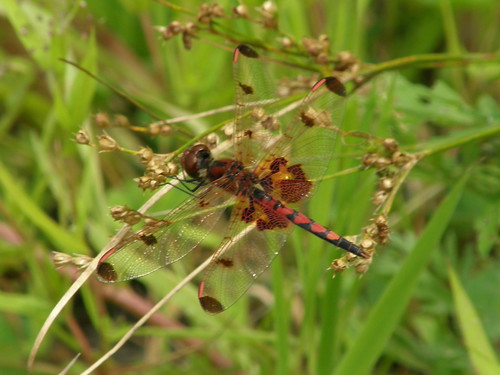
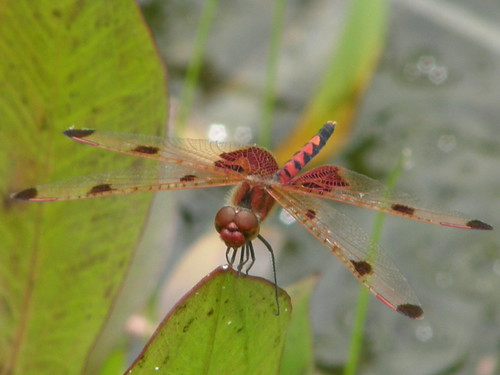 The Calico Pennants were awesome! A lifer
The Calico Pennants were awesome! A liferSome damselflies were so small, I could hardly see them. Below is my attempt to photograph a Citrine Forktail. You can't tell it here, but it was cool looking.
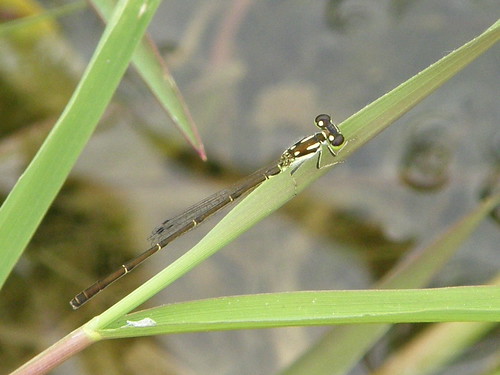 Fragile Forktail, lifer
Fragile Forktail, liferSpecies list for the day (what I could ID):
Calico Pennant
Black Saddlebags
Common Whitetail
Eastern Amberwing
Blue Dasher
12 Spotted Skimmer
Widow Skimmer
Eastern Pondhawk
Common Green Darner
Familiar Bluet
Skimming Bluet
Citrine Forktail
Eastern Forktail
Fragile Forktail
I don't take a guide in the field with me, as I find the best way to learn to ID Odonata is to just start by taking photos of everything that you can't identify with a quick glimpse. I then go to the guides and Internet once I have uploaded them. At first, I thought it was nearly impossible for me to ID odes, however I find it is easier then iding many birds. Just like birds, immatures and females present more problems. But unlike birds, odes fly around attached to each other while mating, giving an opportunity to ID females by association.
I find that the one dragonfly guide I have (doesn't cover damsels) is a little difficult to start out with, because it covers all of North America. The first guide I go to is actually on the net and put out in print by ODNR Division of Wildlife - Dragonflies and Damselflies of Ohio.
I find that the one dragonfly guide I have (doesn't cover damsels) is a little difficult to start out with, because it covers all of North America. The first guide I go to is actually on the net and put out in print by ODNR Division of Wildlife - Dragonflies and Damselflies of Ohio.
Another awesome site that I use is William Hull's (who I credit with getting me hooked on oding! ;-) site Mangoverde. This site also has a world bird guide as well as odes and butterflies.
My favorite ode is the Ebony Jewelwing, pictured below -
My favorite ode is the Ebony Jewelwing, pictured below -
Tweet
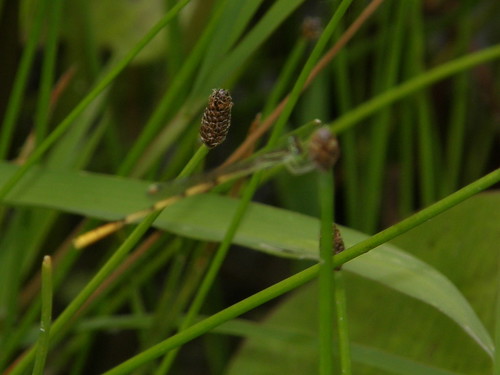
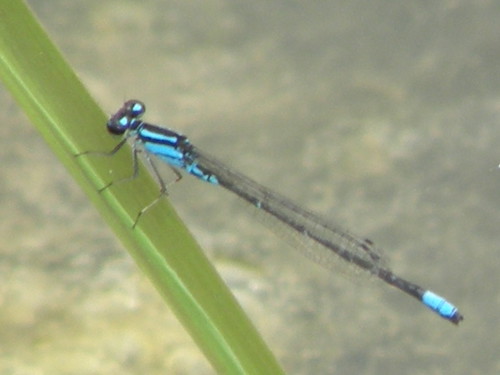
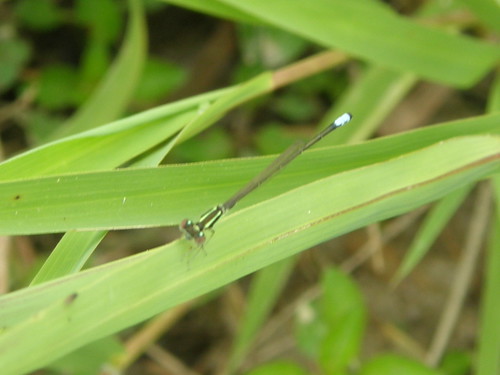
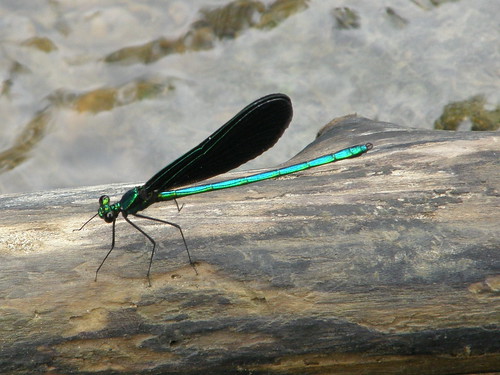
Thank you! This post helps me a lot. I've been reading all the British blogs, and they have been covering Dragonflies and Damselflies, so I'm beginning to learn about them. I didn't know observing them was called oding. I'm going to have to get a guide, and I'll check out the ODNR link and the Mangoverde link you've mentioned. I had no idea there were so many different types. It's a whole new world!
ReplyDeleteI've been trying to find out the variety of dragonfly I have posted on my blog and came across your blog. I also live in the Cincinnati area. Perhaps you can ID this creature: http://splendidlittlestars.blogspot.com/2009/10/dragonfly.html
ReplyDeleteThanks!
PS I'm using my husband's computer so it says the above comment is from Tim, when actually it should say Splendid Little Stars.
ReplyDeleteSplendid Little Stars - the dragonfly in your picture is a Common Whitetail Male Libellula lydia.
ReplyDelete